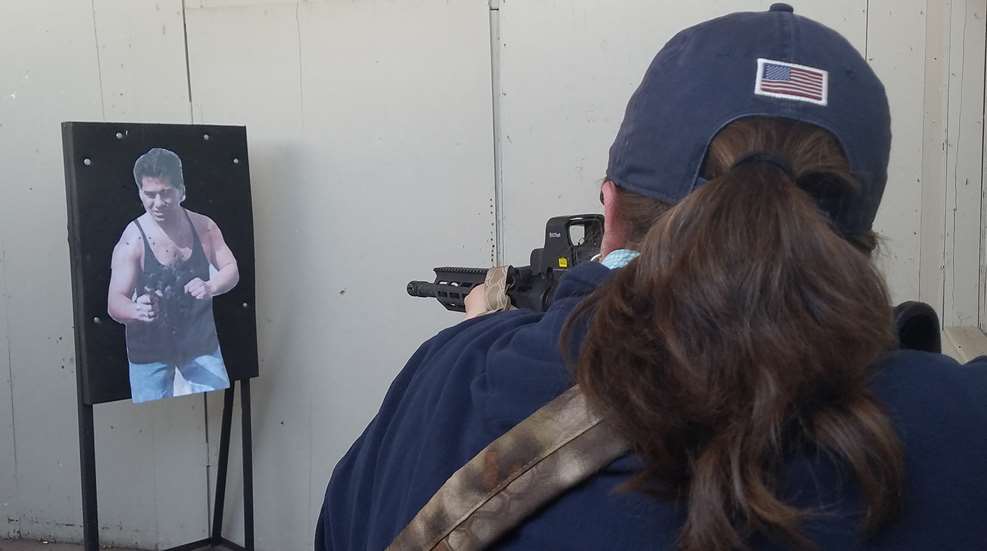
I’ve written before about how important it is that you have a threat assessment model—I like AOI as discussed in this article, but it’s less important which model you use and more important that you just have one. A good threat assessment model helps you make decisions about whether or not deadly force is justified in a particular self-defense situation and also helps you explain yourself later as the legal aftermath unfolds. But it’s not the only model you need.
Having a solid decision-making model in your toolkit will help inform your threat assessment and will also help you decide what to do once you’ve made the “go” decision and it’s time for something to happen. One popular decision-making model I like is referred to as the OODA loop: Observe, Orient, Decide, Act. An Air Force Colonel is credited with developing the OODA loop, and it has since been applied to all sorts of high-stakes decision making. Here’s how the loop works:
Observe
This is pretty self-explanatory, but in the observation phase, you’re taking stock of the situation and trying to build as complete a picture of what’s going on as you can. This is similar to the concept of situational awareness. In the observation phase, you’re in condition yellow. Look around you. Where are you? What are the conditions and time of day? What other people are around and what are they doing? What can you reasonably expect the person or people around you do next? Don’t forget your other senses. What do you hear? Smell?
You have to put all of this information in context and consider it as a whole, so you won’t be acting on a single piece of information (e.g. “that guy makes me nervous but I can’t explain why”) without understanding the totality of the situation. Now, you won’t always have all the information you’d like when you’re faced with a decision, but the goal of observing is to gather as much as you can, sort out what’s relevant and what’s not, and move on to the next step.
Orient
When something pings your radar in the observation loop, you flip to condition orange and start to orient. In the orientation phase, you’re focusing on some person or some situation that concerns you. You’re filtering out irrelevant information and considering some additional factors. What kind of lens are you viewing this situation through? Your gender, age, race, personality and all sorts of things will cause you to view any given scenario differently than someone else might. Do you have cultural or personal biases that are informing or clouding your view? Are you viewing this situation as it really is or as you imagine it to be?
Basically, the orientation phase is where you analyze the relevant information you gathered in the observation phase and try to view it objectively so you can move on to the next phase.
Decide
At this point in the loop, you’ve gathered information about a developing situation and analyzed it as objectively as you can. This step is where you apply that information and make a decision about what you’re going to do next.
The decision might be to turn around and run away. It might be to put your hand on your gun, to draw your gun, or to draw and shoot. It might be to pull out your phone and call 911. The decision might even be to do nothing immediately, but to continue to observe and make a decision if the situation changes.
Act
In the action phase, you carry out whatever decision you just made in the previous phase. You actually do the thing you just decided to do. The action phase serves as a test of the decision, and the results will inform the next loop.
Repeat
That’s right—you will immediately repeat the loop, going back to the Observe phase. Did your action get the results you expected? Are there more decisions to be made? What changed as a result of your action? What’s happening now that wasn’t happening before you acted? Then you take that information into another Orient phase, helping you make the next decision and take the next action and so on, again and again, until the situation is resolved.
Note that this loop isn’t something you stop and think about in the sense of “OK, now it’s time to move into my Orient phase.” It’s something you just do. It happens quickly and sometimes subconsciously, if you’ve trained a particular thing so well and so often that decisions become intuitive and automatic. But left to its own devices, your brain will scream, “Just do something!” at you and you’ll start acting and reacting and acting and reacting over and over, not taking a second to analyze how those actions are building on each other and how the situation is changing.
Sometimes that’s OK. If you’re crossing the street and a car comes speeding around the corner barreling toward you, you won’t need to stop and think—you’ll just jump out of the way. Your brain didn’t skip steps, but it went through the Observe, Orient and Decide steps subconsciously in a fraction of a second and went immediately to the Action step. This is part of why regular training is a good idea: It helps you automate the OODA loop a little bit, and because subconscious activity is much faster than conscious activity, the loop speeds up.
Although it’s designed for high-stakes decisions, you can practice the OODA loop in your everyday life and decision-making to help train your brain to gather and analyze information before it acts (or reacts). It will improve your decision making when the stakes are raised in a risky situation.














































